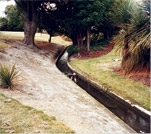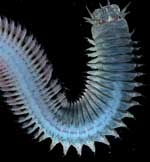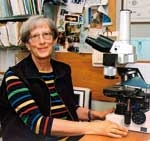PDF of this article (114 KB)


New Zealand's treasures of the sea
Did you know?
- The world’s largest lobster – the packhorse rock lobster – is found along the northeast coast of the North Island. It can weigh up to 20 kg.
- Maui’s dolphin, which lives only in New Zealand waters, is facing extinction. It’s the rarest marine dolphin in the world.
- The only place in the world that the Chatham albatross breeds is The Pyramid, an isolated rock stack in the Chatham Islands.
You’ll find these and many more fascinating creatures in a new online resource: The Treasures of the Sea: Ngā Taonga a Tangaroa. This guide to New Zealand’s marine life provides a convenient overview of all that’s known about life in New Zealand’s oceans.
The ‘micro’ website was launched by WWF-New Zealand in June. Twenty-six leading marine scientists, including 17 from NIWA, have pooled their knowledge of New Zealand’s
biodiversity to create the new resource, which was edited by NIWA scientist Alison MacDiarmid.
Arranged by species group, the microsite reviews and summarises the number of living species across all the major groups of organisms in New Zealand’s marine environment, apart from fungi and bacteria. For each group, there’s a description of basic biology, and ecology, plus notes on key habitats, hotspots for biodiversity, threats, and significance for Māori. Maps provided by the Ministry of Fisheries give key information on the distribution and breeding range of 90 of the species. The appendices include a glossary of taxonomic terms.
An introduction discusses the level of endemism (uniqueness) in each group, and overall for New Zealand, and notes four key implications for management of our marine biodiversity. The microsite is intended to open up the enormous variety of marine life to a wide range of people and raise awareness of the threats and issues that face different groups of marine organisms. It will also be a first stop for many marine scientists when they need to do a quick check of the details of a group before they dive into the more specialised scientific literature.
Visit the new microsite at: www.treasuresofthesea.org.nz
For further information, contact: Dr Alison MacDiarmid, 04 386 0370, [email protected]
Queen’s Birthday honour for NIWA scientist

Dr Janet Bradford-Grieve was made an Officer of the New Zealand Order of Merit (ONZM) in the recent Queen’s Birthday Honours.
This was fitting recognition for the extraordinary contribution that Janet has made to New Zealand marine science in the past four decades. Janet is best known for her work as a biological oceanographer; her 94 publications in the field are many and varied.
Throughout her career, Janet has combined two threads of research: copepod taxonomy and marine ecosystem functioning. Following her PhD, awarded in 1966 by the University of Canterbury, Janet’s post-graduate research united an understanding of physical oceanography and marine chemistry into a study of the interaction of zooplankton with the complicated physical environment off Kaikoura. These threads have been maintained ever since, in multidisciplinary research programmes and in programmes researching New Zealand’s biodiversity. Further, this approach has led to insights into how the physical environment in New Zealand and Antarctic waters interacts with biological process to contribute to the phenomena evident in both satellite ocean-colour data and shipboard observations. This work has resulted in understanding the main features of subtropical and subantarctic marine ecosystems.
Janet has also served, and continues to serve, on a range of national and international scientific ommittees, including the New Zealand Association of Scientists, in which she held office as president (1998–2000). She has been a member of the Council of the Royal Society of New Zealand and in 2003 was elected a Fellow of the RSNZ. Though officially retired, Janet maintains an office at NIWA in Wellington, where she continues her research and international collaborations.
For further information, contact: Dr Dennis Gordon, 04-386 0388, [email protected]
